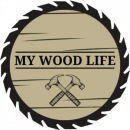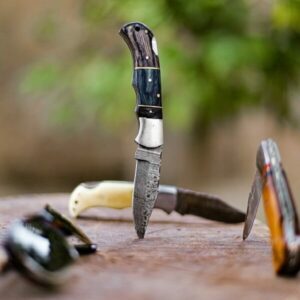Mold is a fungus that can grow on any organic surface, including wood. If left untreated, it can cause some serious damage to your property. In this blog post, we will discuss how to remove mold from wood safely and without damaging the material. We will also provide tips on how to prevent mold from growing in the future.
What Is Mold?
Mold is a type of fungus that can grow both indoors and outdoors. Mold spores are present in the air, and when they land on a damp surface, they can start to grow. Mold needs four things to grow: moisture, oxygen, food, and warmth. Wood is an ideal food source for mold, which is why it is so common to find mold growing on it.
What Mold Can Cause?
Mold can cause a variety of health problems, including respiratory problems, allergic reactions, and skin irritation. If you have mold growing in your home, it is important to get rid of it as soon as possible.
How Does Mold happen?
Mold is most often caused by dampness or humidity in the air. If you live in an area with high humidity, it’s important to take steps to prevent mold from growing in your home. You can do this by ensuring that your home is well-ventilated and by using a dehumidifier.
The Types Of Mold
There are many different types of mold, but some of the most common include mildew, black mold, white mold, and green mold.
Mildew
Mildew is the most frequent mold species found in houses. Mildew is a surface mold that thrives in warm, humid locations such as basements, laundry rooms, and shaded porches. Mildew begins as a gray or white powdery colony before blacking out or turning brown over time. Dab the stain with a cotton swab
Molds can discolor and progressively harm wood surfaces. There are, however, much more dangerous molds that may cause damage to your home’s structural integrity.
Black Mold
Black mold is one of the most dangerous types of mold. It can cause a number of health problems, including respiratory problems and skin irritation. If you suspect that you have black mold in your home, it’s important to call a professional immediately.
White Mold
White mold is less dangerous than black mold, but it can still cause some health problems. If you suspect that you have white mold in your home, it’s important to call a professional immediately.
Green Mold
Green mold is the least dangerous type of mold. It usually only causes minor health problems, such as skin irritation. However, if you suspect that you have green mold in your home, it’s still important to call a professional.
How to Remove Mold from Wood?
If you find mold growing on any wooden surface in your home, it’s important to remove it immediately. The longer it stays, the more damage it can do. There are a few different ways to remove mold from wood.
Use Mold Remover
One way is to use a commercial mold remover. These products are designed specifically for removing mold and they usually work very well. However, they can be expensive and they may not be available in your area.
Vinegar
Another way to remove mold from wood is to use vinegar. Vinegar is a natural disinfectant and it will kill the mold spores. However, it can also damage the wood if you’re not careful.
Baking Soda
Baking soda is another natural disinfectant that can be used to remove mold from wood. It’s important to make sure that you’re using pure baking soda and not baking powder.
Bleach And Water
Another way to remove mold from wood is to use a solution of bleach and water. This method is very effective, but it can damage the wood if it’s not done properly.
Soap And Water
If you don’t have any mold remover on hand, you can also use a solution of soap and water. This method is less effective than using a commercial mold remover, but it’s still worth trying if you’re in a pinch.
What Are The Steps To Remove Mold From Wood?
The first step is to identify the source of the moisture. If you can’t find the source, you may need to call a professional. Once you’ve found the source, you can begin to remove mold from wood by following these steps:
- Start by cleaning the area with soap and water.
- If the mold is still present, you can try using a commercial mold remover.
- If the mold is still present, you can try using a solution of bleach and water.
- Once the mold has been removed, take steps to prevent it from returning by monitoring humidity levels and fixing any leaks.
Removing mold from wood can be a difficult process, but it’s important to do if you want to keep your home healthy and free of harmful chemicals. With a little elbow grease and the right products, you can remove mold safely and effectively. Just remember to take precautions to prevent it from returning in the future.
Sanding The Wood
If the mold is deeply ingrained in the wood, you may need to sand it off. This can be a difficult and time-consuming process, but it’s often necessary to remove all of the molds.
Once you’ve sanded the mold off, you’ll need to refinish the wood to protect it from future damage.
Remove the Mold from the Wood Surface Using a VACUUM Cleaning Machine
Once you have removed the mold from the wood surface, you need to clean the area with a vacuum cleaner. Make sure that you use a brush attachment so that you do not damage the wood. You should also move the vacuum in different directions to make sure that all of the mold spores are removed from the area. After you have vacuumed the area, you need to wipe it down with a damp cloth. This will remove any remaining mold spores from the wood surface.
Taking Precautions While Cleaning The Mold
When you are cleaning mold from wood, it’s important to take precautions to protect yourself. Mold can cause serious health problems, so it’s important to wear gloves and a mask while you’re working. In addition, you should open windows and doors to ventilate the area while you’re working.
What Kills Mold Instantly On Wood?
There are a few things that you can use to kill mold instantly on wood. One of the best things that you can use is bleach. Bleach will kill mold quickly and it will also disinfect the area. You can also use vinegar to kill mold. Vinegar is a natural disinfectant and it’s very effective at killing mold. However, it’s important to dilute the vinegar before you use it. You should also wear gloves and a mask when you’re using bleach or vinegar to kill mold.
Does Vinegar Kill Mold On Wood?
Yes, vinegar does kill mold on wood. Vinegar is a natural disinfectant and it’s very effective at killing mold. However, it’s important to dilute the vinegar before you use it. You should also wear gloves and a mask when you’re using bleach or vinegar to kill mold.
What Kind Of Vinegar Kills Mold?
Any kind of vinegar will kill mold. White vinegar is the most common type of vinegar, but you can also use apple cider vinegar or distilled vinegar. Vinegar is a natural disinfectant and it’s very effective at killing mold. However, it’s important to dilute the vinegar before you use it. You should also wear gloves and a mask.
Can Moldy Wood Be Saved?
In some cases, moldy wood can be saved. If the mold is superficial, you may be able to clean it with soap and water. If the mold is deeply ingrained, you may need to sand it off. Once you’ve removed the mold, you’ll need to refinish the wood to protect it from future damage.
What Is The Difference Between Mold And Mildew?
Mold and mildew are both types of fungi. Mold is often black or green, while mildew is usually white or gray. Mold can cause serious health problems, while mildew is mostly just a nuisance. Both mold and mildew need moisture to grow, so it’s important to keep your home dry to prevent them from growing.
Preventing Mold In The Future
The best way to deal with mold is to prevent it from growing in the first place. There are a few things you can do to prevent mold from growing in your home.
Keep Your Home Clean
One of the best ways to prevent mold is to keep your home clean. Mold thrives in dirty environments, so it’s important to keep your home clean and free of dirt and dust.
Use a Dehumidifier
Another way to prevent mold is to use a dehumidifier. This will help to keep the air in your home dry, which will make it less hospitable for mold.
Fix Leaks Immediately
If you have any leaks in your home, it’s important to fix them immediately. Leaks can provide the perfect environment for mold to grow.
Monitor Humidity Levels
If you live in an area with high humidity, it’s important to monitor the humidity levels in your home. You can do this with a hygrometer. If the humidity levels get too high, it’s time to take action to prevent mold from growing.
Conclusion
Mold can be a dangerous and destructive problem in your home. It’s important to take action to remove mold as soon as you see it. With a little elbow grease and the right products, you can safely and effectively remove mold from wood. Just remember to take precautions to prevent it from returning in the future.









